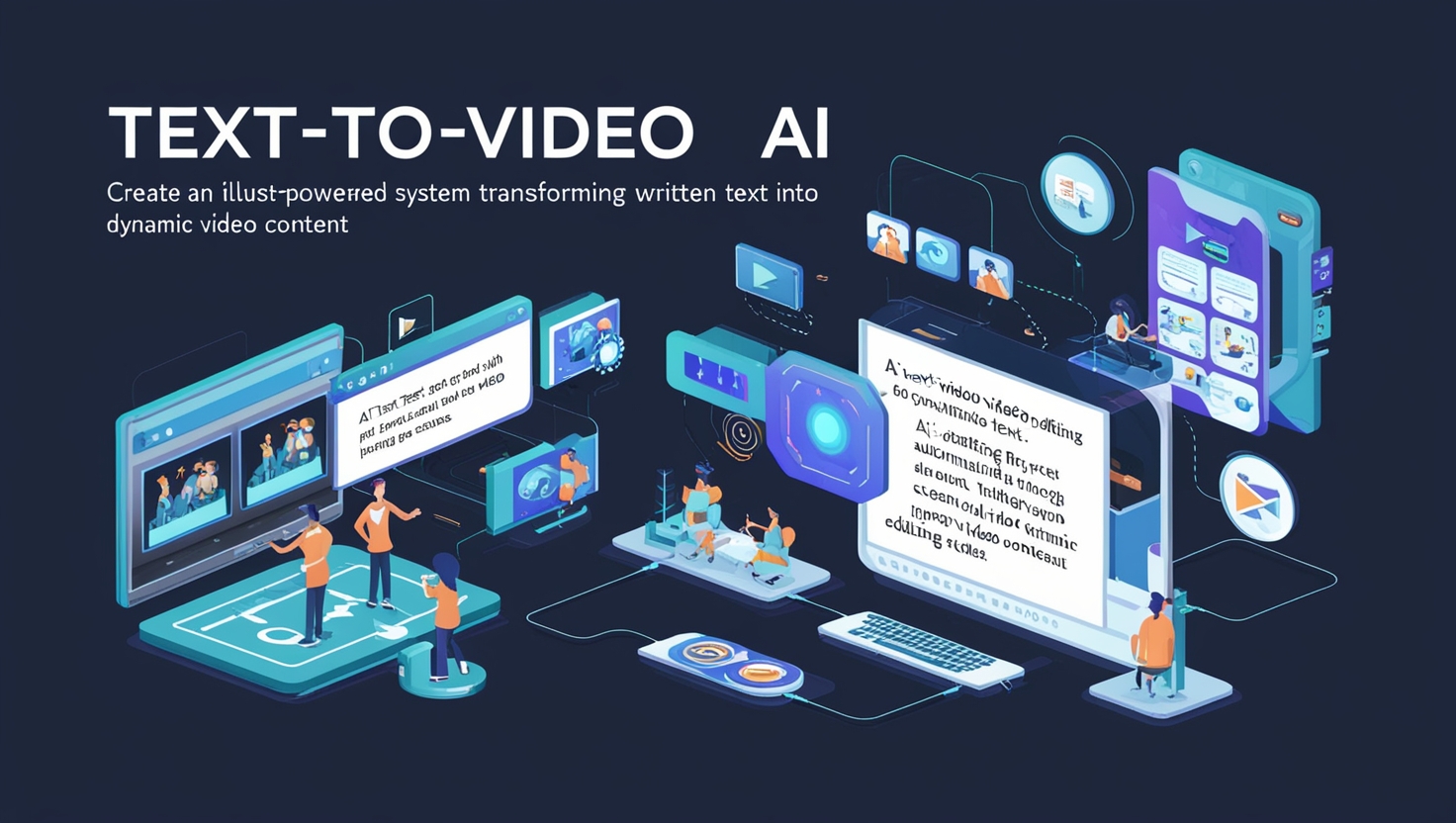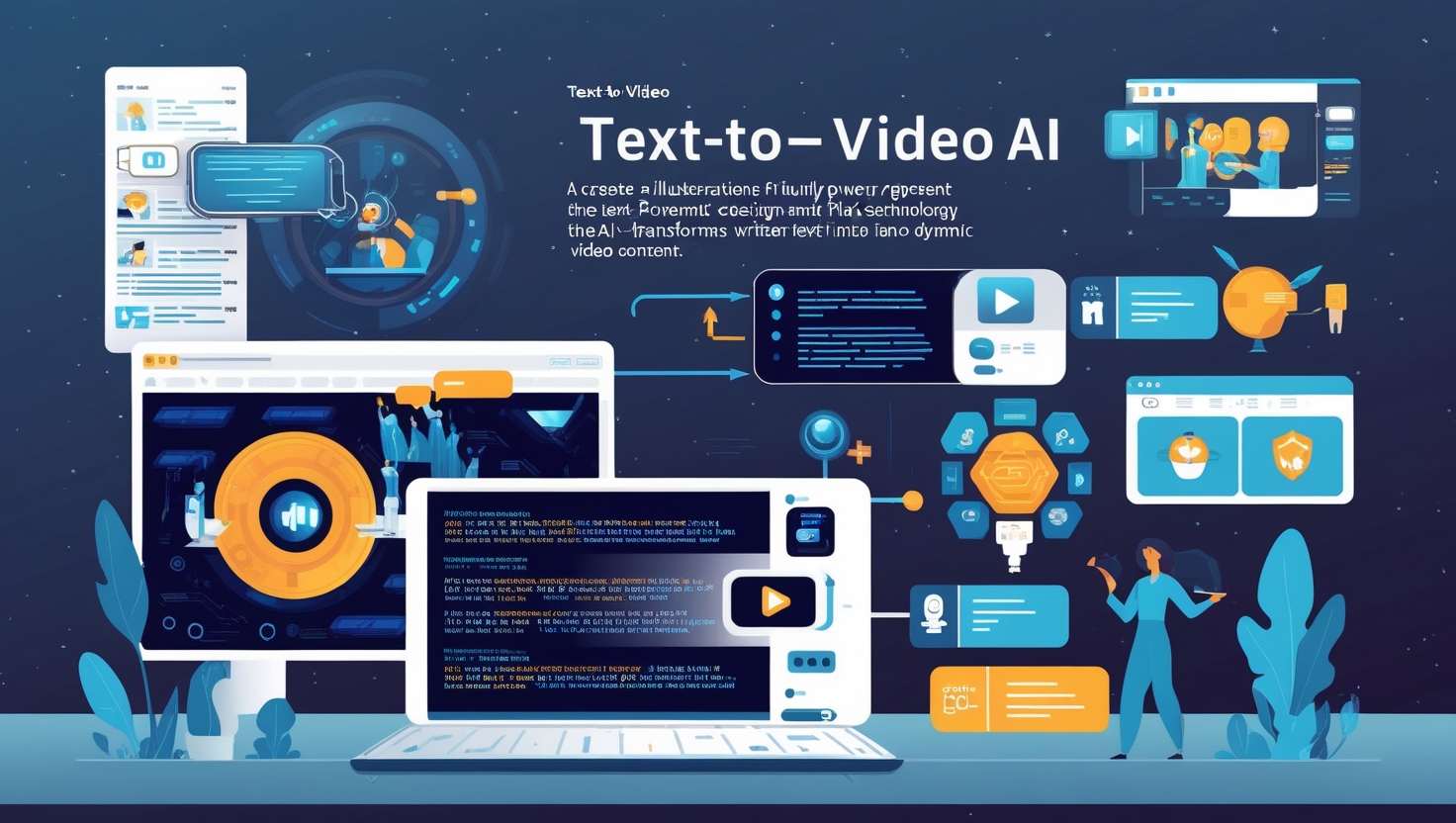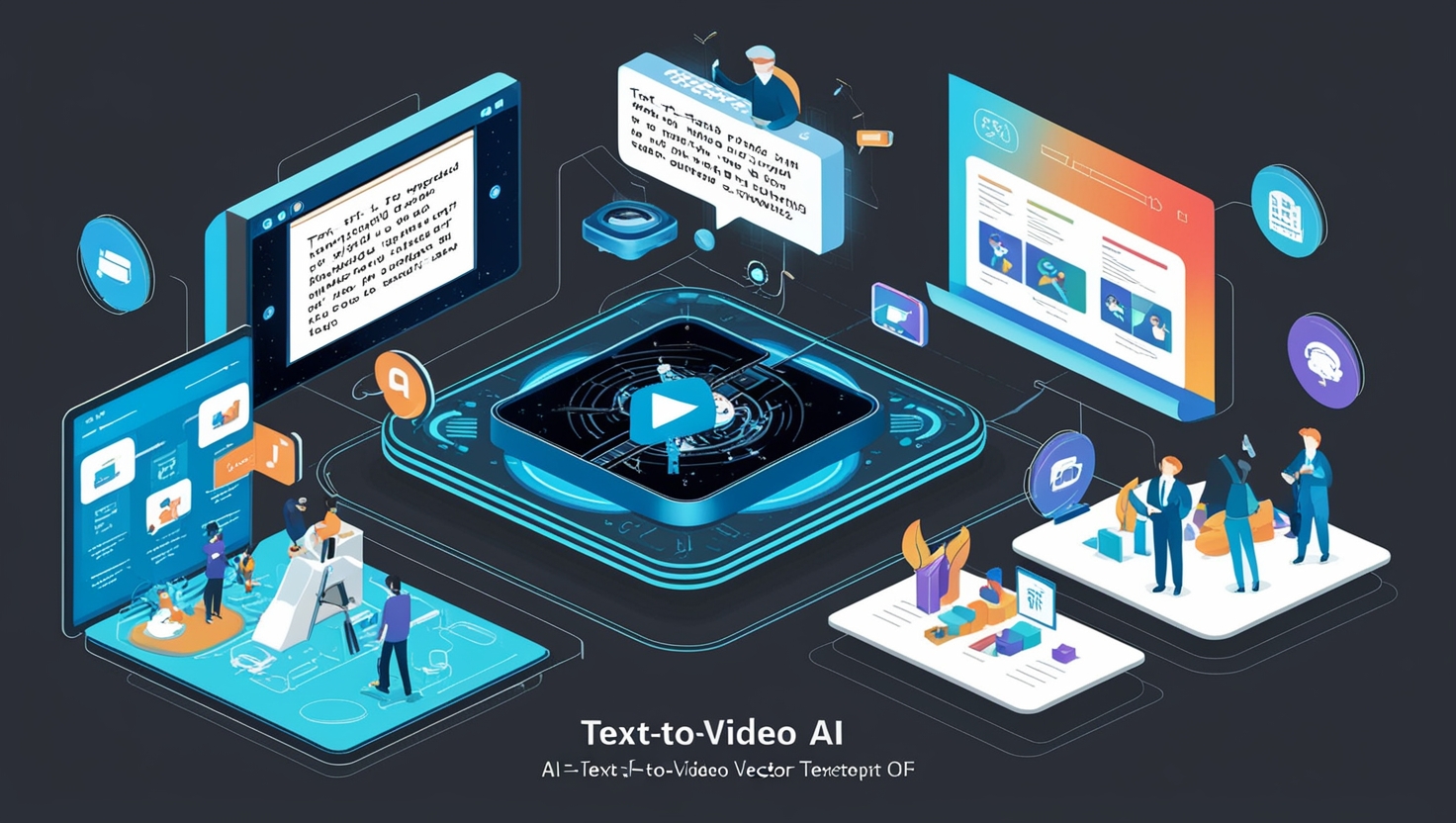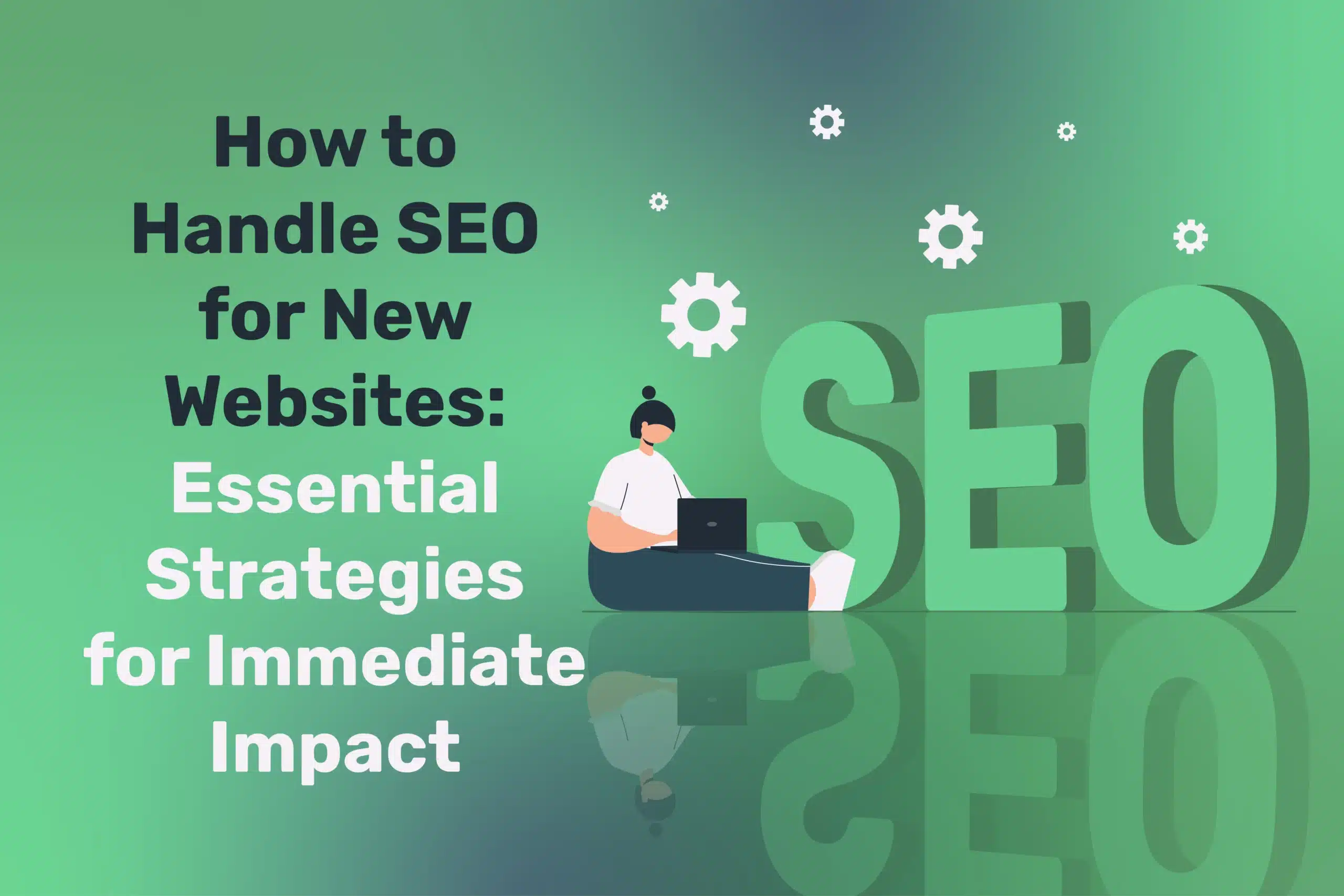
Text-to-Video AI: The Future of Visual Storytelling
Table of Contents
Imagine typing a simple prompt like “A serene coastal sunset with gentle waves, in the style of a Pixar short film” and within minutes receiving a fully rendered video clip—complete with sophisticated colour grading, fluid motion, and consistent animation style. This transformative capability represents the frontier of text-to-video AI technology, a rapidly evolving field that promises to revolutionise visual content creation across industries.
Although currently in experimental stages, these technologies—being advanced by research teams at major tech companies like Google and Meta, alongside innovative startups—are poised to fundamentally transform how marketers, educators, filmmakers, and storytellers conceptualise and produce visual narratives.
This comprehensive guide explores the emergence of text-to-video AI, examines current capabilities and limitations, anticipates compelling use cases, and provides strategic guidance for organisations preparing to harness this powerful technology as it matures.
Understanding Text-to-Video AI Technology
Text-to-video AI technology is revolutionising content creation by transforming written prompts into dynamic video clips. Using advanced machine learning models, these tools generate animations, realistic scenes, and voiceovers with minimal human intervention. As the technology evolves, it opens new possibilities for marketing, education, and entertainment, making video production faster and more accessible than ever.
Core Technology Definition
Text-to-video AI represents a sophisticated class of generative artificial intelligence systems capable of interpreting natural language descriptions and translating them into sequences of coherent visual frames that form animated clips or videos. These systems build upon foundations established in text-to-image generation while incorporating critical temporal understanding to create consistent motion and scene progression.
The underlying technical approach typically involves:
- Multi-modal learning: Systems trained to understand relationships between text descriptions and corresponding video content
- Temporal coherence modelling: Algorithms that maintain consistency of objects, lighting, and style across sequential frames
- Scene understanding: 3D spatial awareness that enables realistic object movement and camera perspective shifts
- Style transfer mechanisms: Capabilities to apply specific visual aesthetics consistently throughout the generated sequence
Evolution from Earlier Generative Models
Text-to-video technology represents a natural progression in the development of generative AI:
Text-to-Image Foundation: Initial breakthroughs in systems like DALL-E, Midjourney, and Stable Diffusion established the feasibility of generating high-quality visual content from textual descriptions. These technologies demonstrated remarkable capabilities in understanding complex prompts and producing corresponding imagery.
Video Diffusion Models: Researchers extended image diffusion models to incorporate temporal dimensions, treating video as a sequence of frames with coherent progression rather than independent images.
Generative Transformers: Advanced transformer architectures adapted for visual sequence generation, leveraging attention mechanisms to maintain consistency across frames while following narrative prompts.
Transformative Potential
The emergence of accessible text-to-video generation tools represents a significant inflection point in content creation:
Democratisation of Video Production: Historically, video creation required specialised skills, expensive equipment, and significant time investment. Text-to-video AI dramatically lowers these barriers, potentially enabling individuals and organisations without traditional video production resources to create compelling visual content.
Conceptual Visualisation: Ideas that previously existed only as written descriptions or storyboards can be rapidly visualised, accelerating ideation and approval processes across creative industries.
Personalisation at Scale: The ability to quickly generate custom video content opens possibilities for unprecedented levels of personalisation in marketing, education, and entertainment.
Creative Augmentation: Rather than replacing human creativity, these tools can serve as powerful collaborators, handling technical aspects of production while allowing humans to focus on narrative, emotional impact, and strategic direction.
Current Technological Landscape

The current technological landscape of text-to-video AI is rapidly advancing, driven by improvements in machine learning, natural language processing, and generative models. Platforms now offer higher-quality visuals, realistic animations, and AI-powered voice synthesis, making video creation more efficient. As competition grows, these tools are integrating with existing media workflows, reshaping how businesses and creators produce engaging video content.
Major Research Initiatives
Several prominent organisations are leading development in this rapidly evolving field:
Meta’s Make-A-Video
Key Capabilities:
- Generates short video sequences from detailed text descriptions
- Demonstrates understanding of physics and object interactions
- Maintains stylistic consistency within individual clips
- Supports style transfer from reference images to video outputs
Technical Approach: Builds upon Meta’s text-to-image technology, extending it with temporal models that preserve consistency while introducing motion.
Current Limitations:
- Relatively short clip duration (typically 5-7 seconds)
- Occasional artefacts during complex motion sequences
- Limited control over camera movement and scene composition
- Still in research phase without public availability
Google’s Phenaki and Imagen Video
Key Capabilities:
- Generates longer video sequences from story-like prompt sequences
- Demonstrates understanding of narrative progression
- Shows improved temporal consistency for extended clips
- Supports variable length outputs based on prompt complexity
Technical Approach: Leverages transformer-based architecture with specialised attention mechanisms that maintain contextual awareness across longer sequences.
Current Limitations:
- Variable quality in maintaining object consistency through scene changes
- Computationally intensive, requiring significant processing resources
- Complex prompting needed for narrative coherence
- Limited public demonstrations without general availability
Runway Gen-2
Key Capabilities:
- Publicly accessible (though limited) text-to-video capabilities
- Support for text, image-to-video, and video-to-video generation
- Integration with broader creative workflow tools
- Commercial application focus with emphasis on creative industries
Technical Approach: Combines diffusion models with proprietary techniques for maintaining stylistic and temporal consistency.
Current Limitations:
- Restricted clip duration in publicly available versions
- Resolution constraints compared to professional video standards
- Subscription-based access with usage limitations
- Still evolving quality for complex scenes or specific artistic styles
Emerging Startups and Specialised Tools
Beyond major tech companies, innovative startups are developing specialised approaches:
Synthesia
Focus: Business-oriented video generation with digital avatars and presenters
Key Differentiation: Emphasis on realistic human presenters for corporate and educational content
Current Applications: Training videos, multilingual presentations, personalised marketing
HourOne
Focus: Human-like virtual presenters for business video content
Key Differentiation: Library of diverse presenter options with natural speech patterns
Current Applications: Product demonstrations, customer service videos, localised content
D-ID
Focus: Personalised video creation with speaking digital humans
Key Differentiation: Animation of still photos with synchronised speech
Current Applications: Personalised messages, educational content, customer engagement
Kaiber
Focus: Artistic and creative video generation with emphasis on aesthetic quality Key Differentiation: Style-focused generation with artist-friendly interfaces Current Applications: Music videos, artistic content, visual experimentation
Technical Challenges and Limitations
Current text-to-video systems face several significant challenges:
Frame Consistency: Maintaining coherent object appearance, lighting, and style across frames remains difficult, particularly for longer sequences.
Computational Requirements: Video generation demands substantially more processing power than still image creation, limiting accessibility and real-time applications.
Resolution Constraints: Most systems currently produce relatively low-resolution outputs (typically 256×256 or 512×512 pixels) compared to professional video standards.
Motion Naturalness: Achieving fluid, physically plausible motion—particularly for complex scenes or human figures—represents an ongoing challenge.
Controllability: Current systems offer limited precise control over camera movement, scene composition, and timing compared to traditional video production.
Training Data Limitations: The volume of high-quality, diverse video data available for training remains more limited than image datasets, potentially constraining model capabilities.
Strategic Applications Across Industries

Text-to-video AI is transforming multiple industries by streamlining content creation and enhancing engagement. In marketing, brands use it to generate dynamic ads and product explainers. In education, AI-driven videos simplify complex topics through automated visual storytelling. News and media outlets leverage it for quick-turnaround reporting, while e-commerce platforms enhance product listings with AI-generated demos. This technology is revolutionising how industries communicate and scale video production.
Marketing and Advertising
Text-to-video AI presents transformative opportunities for brand communication:
Rapid Concept Testing:
- Generate multiple visual approaches to campaign concepts before committing production resources
- Test audience reactions to different visual styles, narratives, or emotional tones
- Iterate quickly based on feedback, reducing the traditional concept-to-production timeline
Personalised Marketing Content:
- Create customised video messages for different customer segments
- Develop localised versions of campaigns with appropriate cultural elements
- Generate product demonstrations tailored to specific use cases or industries
Social Media Optimisation:
- Quickly produce platform-specific video content in appropriate formats and durations
- Create visual variations for A/B testing engagement
- Develop responsive content tied to trending topics or current events
- Generate short-form video content for platforms like Instagram Reels, TikTok, and YouTube Shorts
Cost-Efficient Production:
- Enable smaller businesses to produce professional-quality video content with limited budgets
- Reduce need for location shoots, professional actors, or extensive post-production
- Facilitate rapid creation of supplementary campaign elements
Film and Entertainment Production
Creative industries stand to benefit from new pre-production and visualisation capabilities:
Advanced Storyboarding:
- Transform written scripts into visual sequences for director and team alignment
- Explore different visual approaches to scenes before committing resources
- Communicate complex visual concepts to production teams more effectively
Pre-visualisation:
- Generate rough versions of complex visual effects sequences
- Test different camera angles, movements, and scene compositions
- Visualise location-based scenes without scouting or travel requirements
Independent Production Empowerment:
- Enable low-budget filmmakers to create professional-quality visual effects
- Visualise concepts for pitching to potential investors or distributors
- Create placeholder sequences during editing that can later be refined
Animation Assistance:
- Generate base animations that can be refined by professional animators
- Visualise character movements and interactions for reference
- Create background elements and environments efficiently
Educational Content Development
Text-to-video technology can transform how educational content is created and consumed:
Concept Visualisation:
- Transform abstract scientific or mathematical concepts into visual explanations
- Create historical reenactments or visualisations without elaborate production
- Develop visualisations of microscopic, astronomical, or otherwise invisible phenomena
Customised Learning Materials:
- Generate explanatory videos tailored to different learning styles or knowledge levels
- Create content in multiple languages with appropriate cultural context
- Develop personalised examples relevant to specific student interests
Rapid Content Updates:
- Quickly update educational videos when information changes
- Create variations of explanations using different approaches or examples
- Develop supplementary materials addressing specific questions or challenges
Accessible Education:
- Enable educators with limited resources to create high-quality visual content
- Develop materials for specialised topics with small audience bases
- Support distance learning with rich visual explanations
E-commerce and Product Marketing
Online retailers can leverage text-to-video AI to enhance product presentation:
Dynamic Product Demonstrations:
- Generate videos showing products in various use contexts
- Demonstrate features and benefits visually without physical production
- Create seasonal or occasion-specific demonstrations efficiently
Visualisation of Customisation Options:
- Show how products look with different colour choices, materials, or configurations
- Visualise custom products before manufacturing
- Demonstrate before-and-after scenarios for transformative products
Interactive Shopping Experiences:
- Generate personalised product showcase videos based on customer preferences
- Create virtual try-on or placement visualisations
- Develop lifestyle content showing products in relevant environments
Multilingual Product Presentations:
- Create localised versions of product videos for international markets
- Develop culturally appropriate demonstrations for different regions
- Support multiple languages without duplicate production efforts
Implementation Strategies and Best Practices

Successful implementation of text-to-video AI requires a structured approach. Start by defining clear content goals and selecting the right AI platform that aligns with your needs. Optimise scripts for AI processing by keeping them concise and structured. Customise visuals, voiceovers, and branding elements to maintain consistency. Regularly test and refine outputs to ensure quality and engagement. Finally, integrate AI-generated videos seamlessly into your content strategy for maximum impact.
Effective Prompt Engineering
The quality of text-to-video outputs depends significantly on well-crafted prompts:
Structural Components of Effective Prompts:
- Subject Definition: Clear description of main elements, characters, or objects
- Environmental Context: Specific details about setting, lighting, and atmosphere
- Action Description: Precise language describing motion and interaction
- Stylistic Guidance: References to visual styles, artistic influences, or aesthetic qualities
- Technical Parameters: Specifications about camera angles, movements, or transitions
Example Prompt Structure:
[Subject: A sleek silver drone with blue accent lights]
[Environment: A futuristic cityscape at dusk with neon signs and skyscrapers]
[Action: The drone rises smoothly from street level, weaving between buildings]
[Style: Cyberpunk aesthetic with cinematic lighting similar to Blade Runner]
[Technical: Slow-motion tracking shot following the drone’s perspective]
Prompt Refinement Process:
- Begin with a basic description covering essential elements
- Generate initial output and identify areas for improvement
- Add specific details addressing quality issues or missing elements
- Experiment with stylistic references to guide aesthetic direction
- Incorporate technical language for camera behaviour and movement
- Test variations to identify optimal prompt structures for consistent results
Common Pitfalls to Avoid:
- Overly vague descriptions leading to generic or unpredictable results
- Contradictory elements creating confusion in the generation process
- Excessive detail overwhelming the system’s ability to maintain consistency
- Insufficient guidance on movement, leading to static or unnatural motion
- Lack of stylistic direction resulting in inconsistent visual aesthetics
Integration with Existing Workflows
Organisations can maximise value by thoughtfully integrating text-to-video capabilities:
- Incorporate text-to-video generation into early conceptual phases
- Use generated videos as discussion points in creative briefings
- Develop libraries of successful prompts aligned with brand guidelines
- Create prompt templates for consistent brand representation
Production Pipeline Considerations:
- Position AI generation as a complementary tool rather than replacement
- Identify stages where text-to-video can accelerate workflows
- Develop clear handoff processes between AI generation and human refinement
- Establish quality control protocols for AI-generated content
Technical Infrastructure Requirements:
- Assess computing resources needed for desired quality and volume
- Consider cloud-based solutions for scalable processing capacity
- Implement secure storage and management for generated assets
- Develop metadata systems for tracking and organising generated content
Team Skill Development:
- Train creative teams in effective prompt engineering
- Develop expertise in post-processing and enhancing generated content
- Build understanding of both capabilities and limitations
- Foster collaborative approaches combining human and AI creativity
Enhancement and Post-Processing
Current technological limitations often require additional refinement of generated content:
Visual Quality Improvements:
- Upscale resolution using specialised enhancement tools
- Correct colour consistency issues with grading software
- Apply noise reduction or sharpening to improve clarity
- Address artefacts or glitches through frame-by-frame editing
Content Extension Techniques:
- Loop shorter clips with seamless transitions for extended duration
- Create composite videos from multiple generated sequences
- Combine AI-generated elements with traditional video assets
- Use motion graphics to enhance or extend generated content
Professional Finishing Elements:
- Add sound design and music to enhance emotional impact
- Incorporate text overlays, logos, and calls to action
- Apply professional colour grading for brand consistency
- Add transitions between scenes for smoother narrative flow
Software Tools for Enhancement:
- Professional video editing suites (Adobe Premiere Pro, Final Cut Pro, DaVinci Resolve)
- Visual effects applications for compositing and enhancement
- Specialised AI upscaling tools for resolution improvement
- Audio editing software for comprehensive sound design
Ethical Considerations and Responsible Implementation
Ethical AI use in text-to-video requires transparency, accuracy, and bias detection. Clear labelling, copyright compliance, and human oversight help maintain trust and content integrity.
Misinformation and Deepfake Concerns
The power to generate realistic video raises significant ethical considerations:
Potential Risks:
- Creation of false events featuring public figures
- Fabrication of evidence or misleading news content
- Impersonation for fraud or reputation damage
- Erosion of trust in authentic video documentation
Mitigation Strategies:
- Implement visible watermarking on generated content
- Develop and adopt content provenance standards
- Establish clear policies prohibiting misleading applications
- Support development of detection technologies
- Create industry-wide ethical guidelines
Copyright and Intellectual Property
Generated video raises complex questions about ownership and influence:
Key Considerations:
- Training data potentially containing copyrighted material
- Similarity of outputs to existing creative works
- Ownership rights for AI-generated content
- Attribution requirements and transparent disclosure
Recommended Practices:
- Maintain awareness of evolving legal frameworks
- Implement clear usage policies aligned with current understanding
- Avoid prompts specifically requesting imitation of copyrighted works
- Consider supplementary human creative contribution to strengthen ownership claims
- Maintain detailed records of generation processes and subsequent modifications
Transparency and Audience Trust
Maintaining audience trust requires thoughtful disclosure practices:
Disclosure Approaches:
- Clear labelling of AI-generated or enhanced content
- Transparency about the role of AI in creative processes
- Education of audiences about technology capabilities and limitations
- Behind-the-scenes content explaining production methodologies
Trust-Building Strategies:
- Consistently ethical application aligned with stated values
- Quality control ensuring responsible representation
- Open dialogue with audiences about technology usage
- Balancing innovation with respect for audience expectations
Case Studies: Strategic Implementation Examples
Examining real-world case studies showcases how businesses successfully implement text-to-video AI. These examples highlight strategic approaches, challenges overcome, and measurable outcomes, offering valuable insights for effective adoption.
Marketing Campaign Concept Testing
Organisation Type: Mid-sized consumer product company
Implementation Scenario:
- Marketing team developed three campaign concepts for new product launch
- Traditional approach would require storyboarding and limited mockups before selection
- Text-to-video AI implemented to visualise all three concepts
- Generated videos presented to focus groups for feedback
- Winning concept identified with significant audience data before production investment
Key Benefits Realised:
- 60% reduction in concept-to-selection timeline
- More informed decision-making based on actual visual representations
- Ability to test multiple visual approaches within each concept
- Early identification of potential messaging issues
- More efficient allocation of production budget to winning concept
Educational Content Development
Organisation Type: Online learning platform specialising in science education
Implementation Scenario:
- Course developers identified need for visualisations of complex molecular processes
- Traditional animation would require significant specialist involvement and budget
- Text-to-video AI implemented with scientific accuracy review process
- Generated base animations enhanced with professional voiceover and labelling
- Rapid development of comprehensive visual library across multiple courses
Key Benefits Realised:
- 70% cost reduction compared to traditional animation processes
- Ability to quickly update visualisations when scientific understanding evolved
- Development of previously unfeasible visualisations for niche topics
- Consistent visual style across extensive content library
- Improved student comprehension through visual learning
6.3 Independent Film Pre-visualisation
Organisation Type: Independent film production company
Implementation Scenario:
- Director needed to visualise complex science fiction sequences for investor pitch
- Budget constraints prevented traditional pre-visualisation development
- Text-to-video AI implemented to generate key scene concepts
- Generated sequences combined with script and production plan for pitch presentation
- Successful funding secured based on compelling visual proof of concept
Key Benefits Realised:
- Creation of convincing visual assets without specialised VFX team
- Ability to demonstrate creative vision concretely to non-technical investors
- Refinement of script based on visual realisations
- Early identification of potential production challenges
- Enhanced production planning based on visual references
Future Developments and Preparation Strategies
As text-to-video AI continues to evolve, businesses must stay ahead by adapting to emerging capabilities. Understanding future trends and implementing proactive strategies will ensure seamless integration and long-term success in an AI-driven landscape.
Anticipated Technological Advancements
The text-to-video landscape is expected to evolve rapidly in several dimensions:
Resolution and Quality Improvements:
- Progression toward HD (1080p) and 4K resolution standards
- Enhanced frame rate capabilities for smoother motion
- Improved lighting simulation and physical accuracy
- More sophisticated camera movements and cinematic techniques
Duration and Complexity Extensions:
- Capability to generate longer coherent sequences (1-2 minutes)
- Improved narrative understanding for multi-scene generation
- Better maintenance of character and object consistency
- More nuanced emotional and atmospheric control
Interactivity and Control:
- Real-time adjustment capabilities during generation process
- More precise control over specific elements and movements
- Interactive editing interfaces for non-technical users
- Integration with traditional video editing workflows
Multimodal Integration:
- Combined generation of video, audio, and text elements
- Voice-driven direction and modification capabilities
- Automatic synchronisation with music or narration
- Integration with AR/VR environments and experiences
Strategic Preparation for Organisations
Businesses can position themselves advantageously for upcoming capabilities:
Knowledge Development:
- Establish cross-functional teams to monitor technological developments
- Build prompt engineering expertise through experimentation with current tools
- Develop understanding of both technical and creative applications
- Create internal knowledge-sharing mechanisms for insights and best practices
Workflow Preparation:
- Identify processes that could benefit from text-to-video integration
- Develop preliminary guidelines for responsible implementation
- Create assessment frameworks for evaluating appropriate use cases
- Design pilot projects for early adoption when technology matures
Resource Planning:
- Evaluate potential computing infrastructure requirements
- Assess skill development needs for creative and technical teams
- Consider potential partnerships with specialised service providers
- Develop budgeting models for implementation at various scales
Ethical Framework Development:
- Establish clear organisational principles for responsible usage
- Create decision-making processes for evaluating appropriate applications
- Develop transparency guidelines for customer/audience communication
- Build awareness of evolving regulatory and legal considerations
Building Trust Through Authenticity and Transparency
Establishing trust in AI-generated video content requires authenticity and transparency. Clear disclosures, ethical usage, and maintaining brand integrity help foster credibility, ensuring audiences remain engaged and confident in the content they consume.
Establishing Credibility with AI-Enhanced Content
As text-to-video technology becomes more prevalent, maintaining audience trust becomes paramount:
Professional Implementation Approaches:
- Focus on quality and authenticity in all AI-generated content
- Ensure alignment between generated content and established brand values
- Apply consistent standards across traditional and AI-generated assets
- Implement thorough review processes before public release
Expertise Demonstration:
- Showcase thoughtful human curation and enhancement of AI outputs
- Articulate clear purpose and intentionality behind technology usage
- Demonstrate value added beyond novelty of AI generation
- Apply domain expertise to ensure accuracy and appropriateness
Authentic Brand Communication:
- Connect AI-generated content to genuine brand narratives and values
- Avoid misleading or exaggerated representations
- Maintain consistent voice and messaging across all content
- Focus on audience needs rather than technological capabilities
Transparency and Disclosure Best Practices
Organisations should develop clear approaches to communication about AI usage:
Contextual Disclosure Methods:
- Include appropriate labels or notifications for AI-generated content
- Provide behind-the-scenes insights into creative processes
- Explain the role of human oversight and enhancement
- Share the rationale for technology adoption
Educational Engagement:
- Help audiences understand both capabilities and limitations
- Address common misconceptions about generative technology
- Provide resources for further learning about implemented tools
- Create open dialogue opportunities for questions and feedback
Responsibility Demonstration:
- Articulate ethical guidelines governing organisational usage
- Share examples of responsible application and decision-making
- Acknowledge both benefits and challenges of emerging technology
- Demonstrate commitment to continual evaluation and improvement
The Balanced Perspective: Human Creativity Enhanced by AI
Text-to-video AI represents one of the most significant technological developments in visual content creation since the digital revolution. While still evolving, these tools offer unprecedented possibilities for visualising ideas, accelerating production processes, and democratising video creation. The organisations that will benefit most are those who approach these capabilities thoughtfully—viewing them as powerful creative collaborators rather than replacements for human creativity and judgement.
The most compelling applications will likely emerge from balanced partnerships between human vision and AI capabilities. By leveraging these tools to handle technical execution while maintaining human direction over narrative, emotional resonance, and strategic purpose, organisations can achieve remarkable results that would be impossible through either approach alone.
As text-to-video technology continues to mature, the distinction between AI-generated and traditionally produced content will become increasingly fluid. What will remain constant is the need for authentic storytelling, ethical application, and genuine connection with audiences. By focusing on these enduring principles while embracing technological innovation, content creators can navigate this transformative period successfully—producing visual stories that inform, inspire, and engage in powerful new ways.




